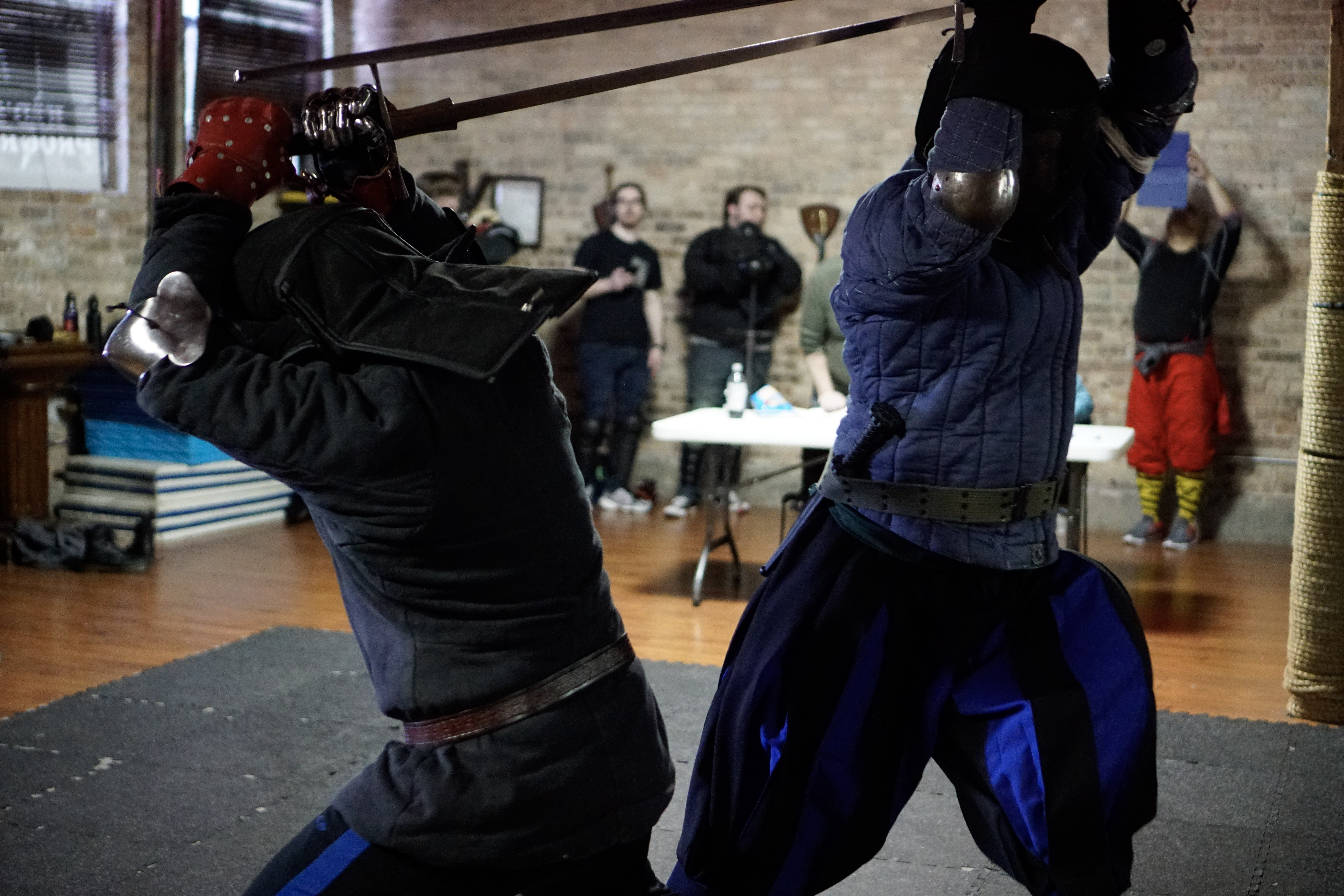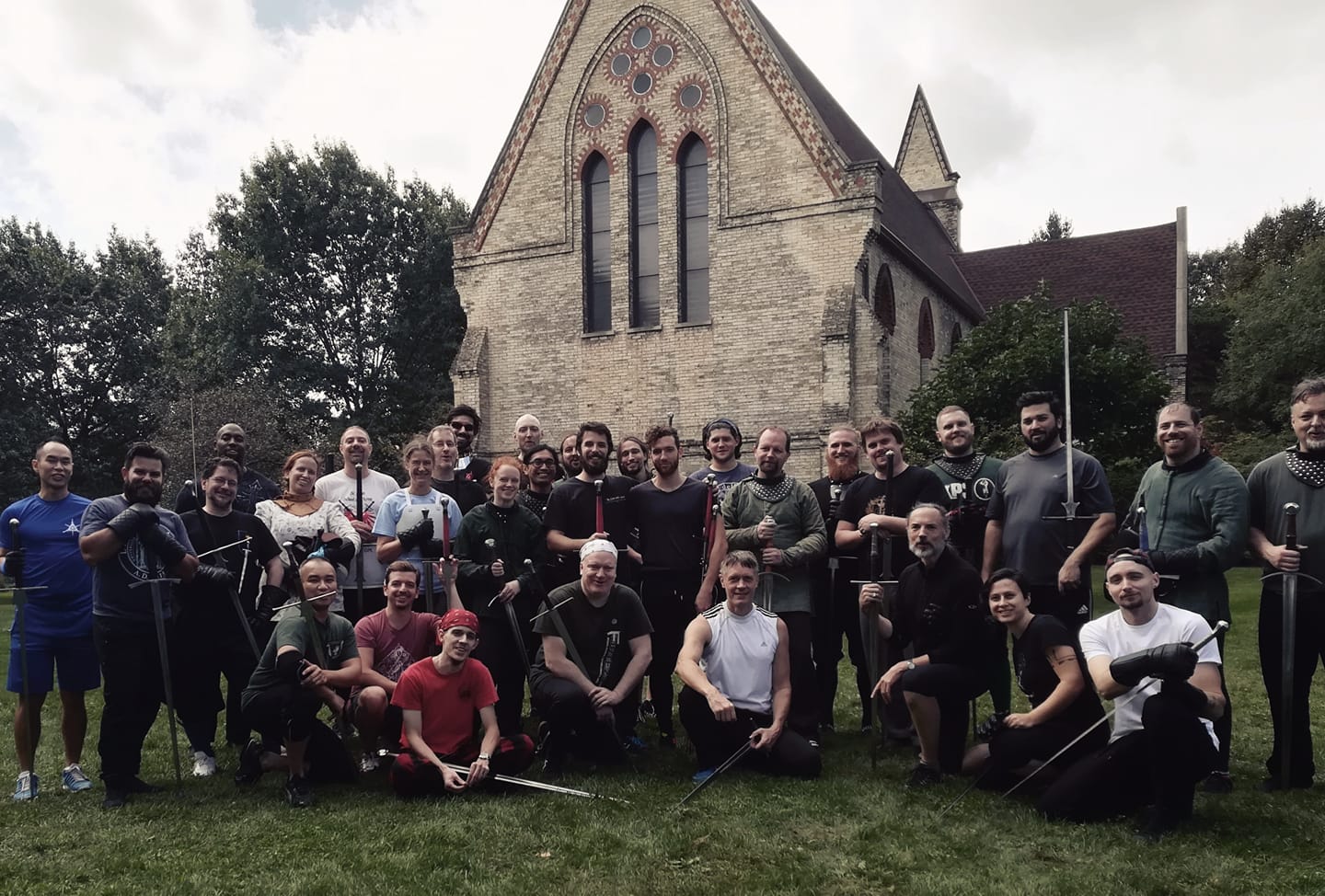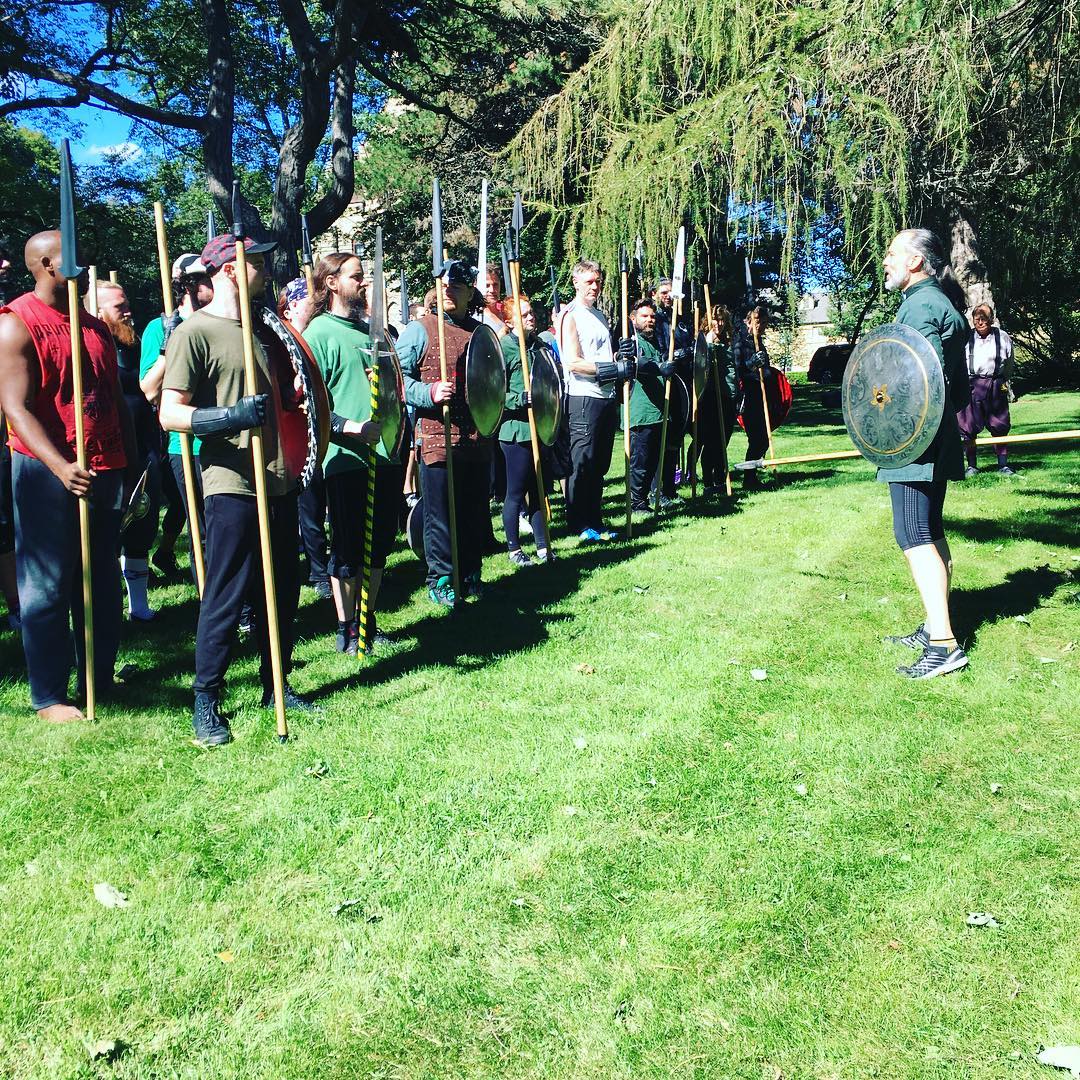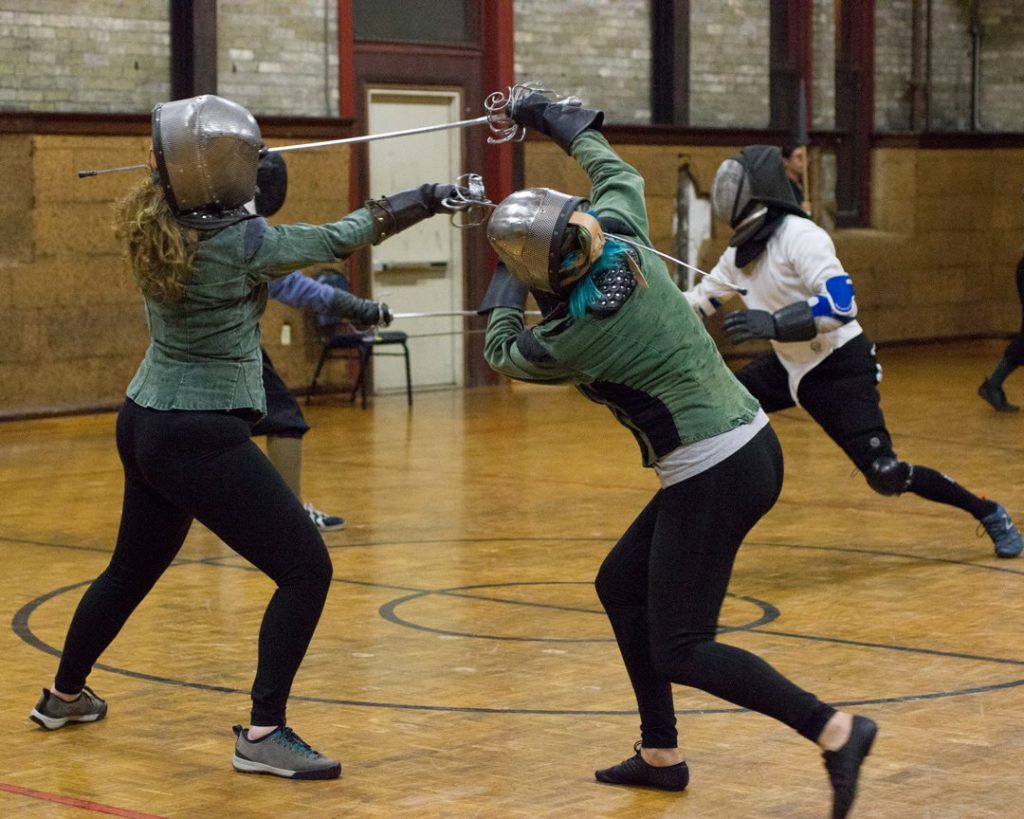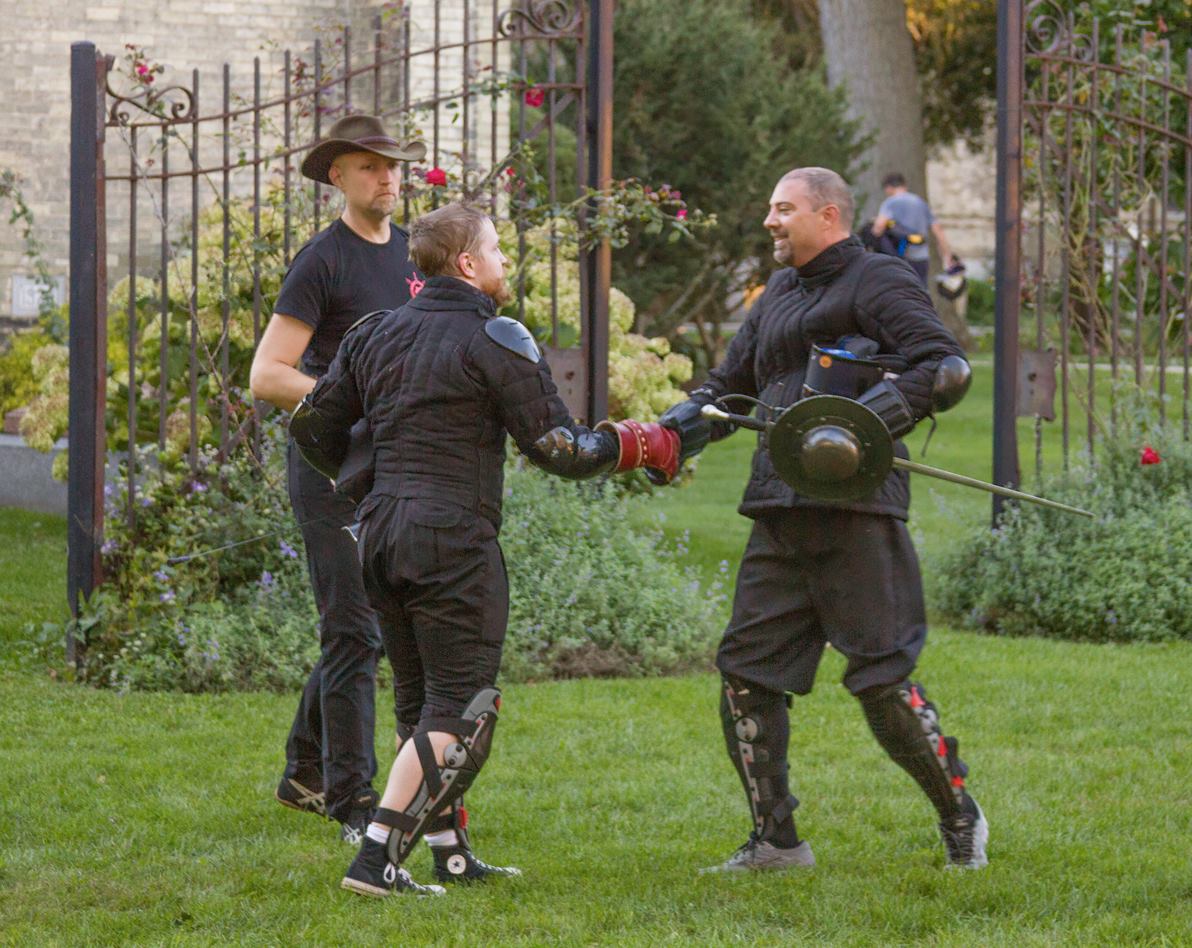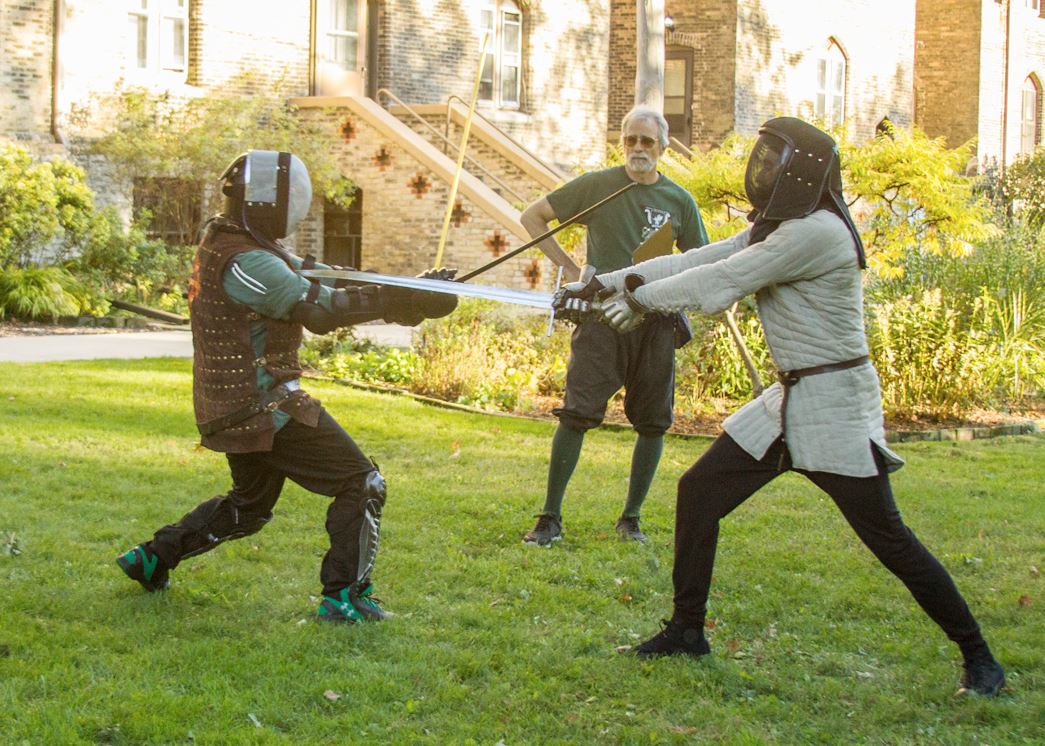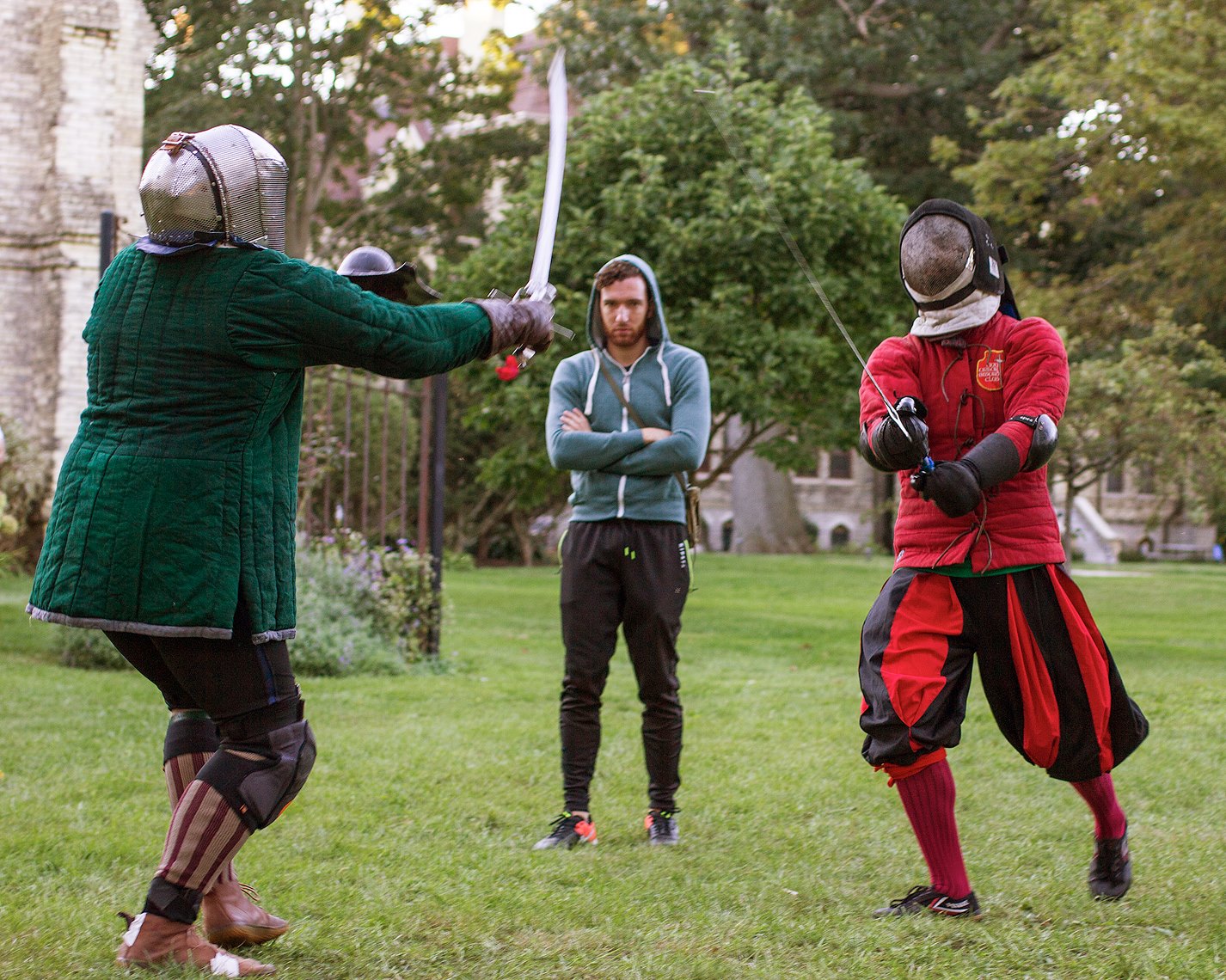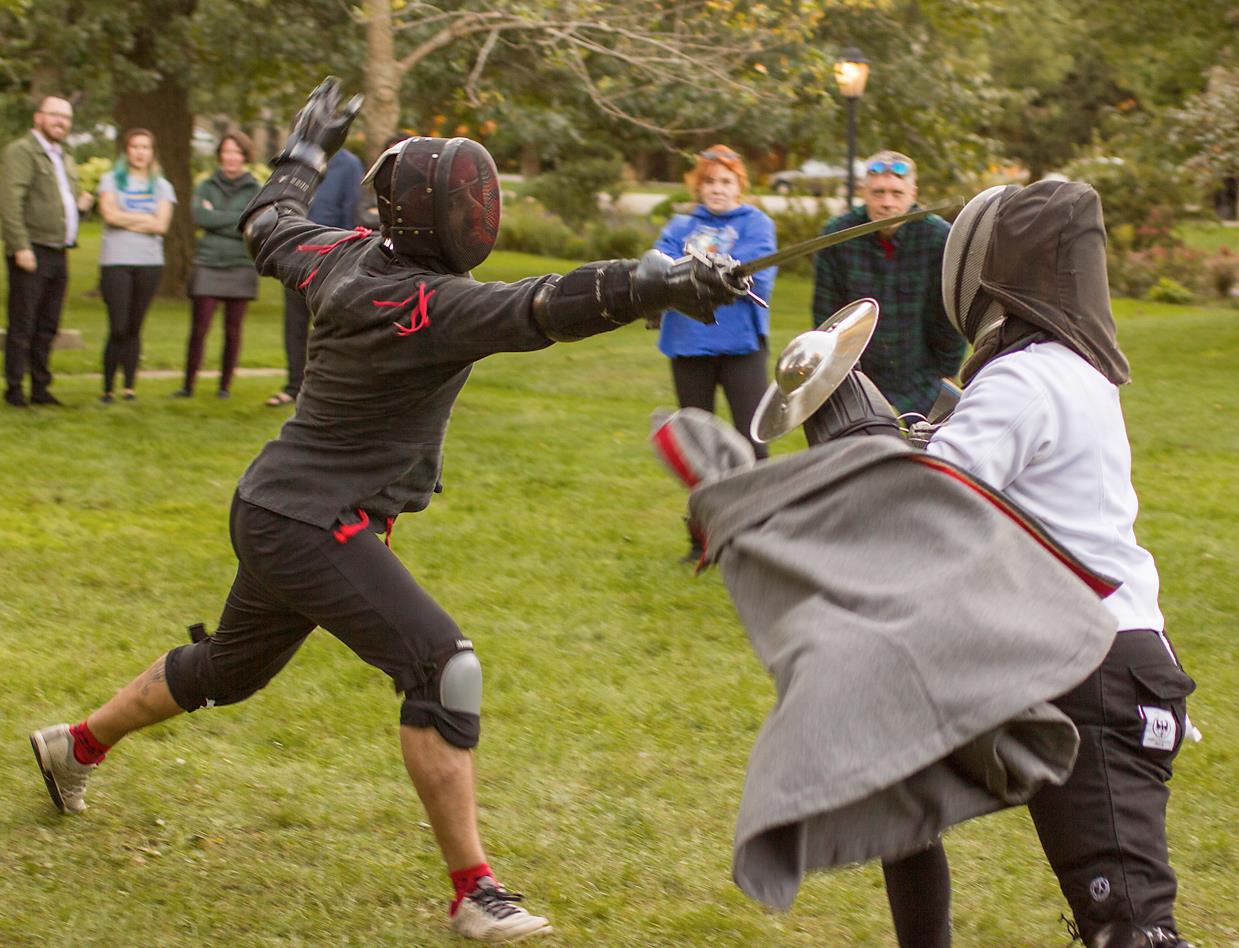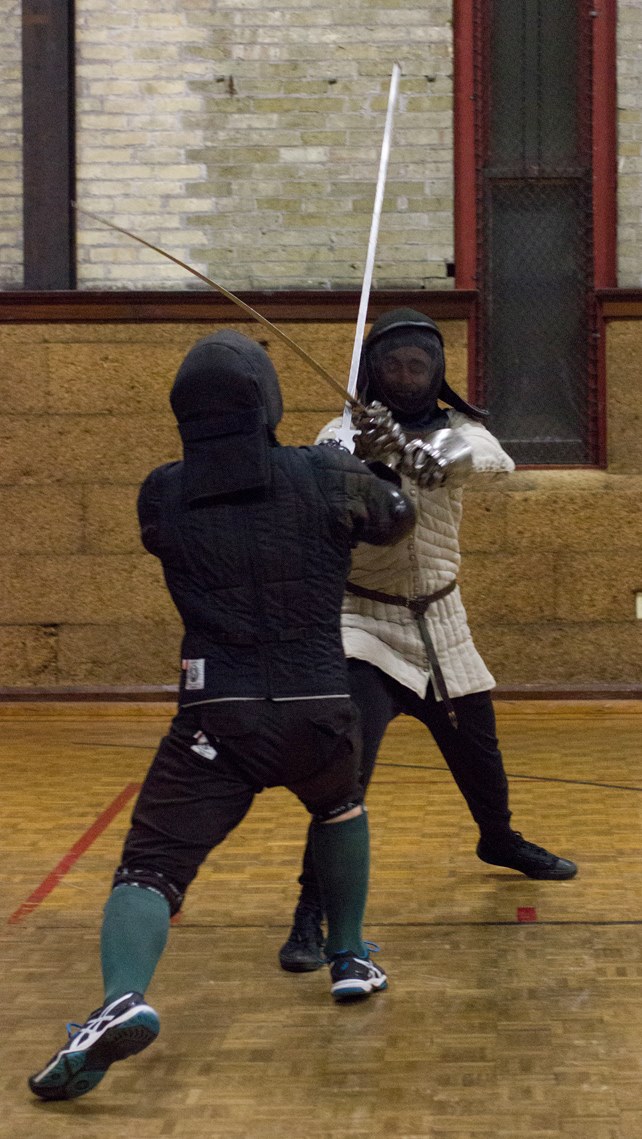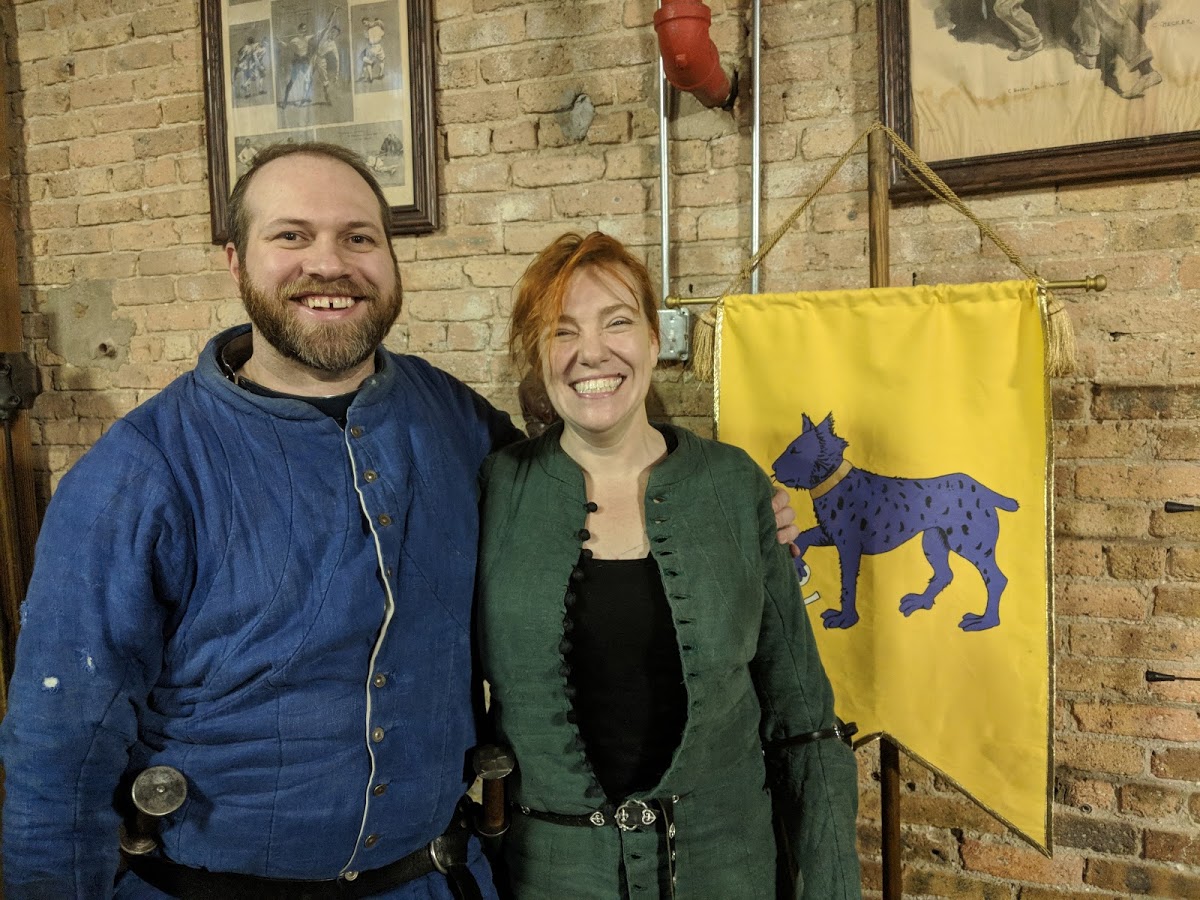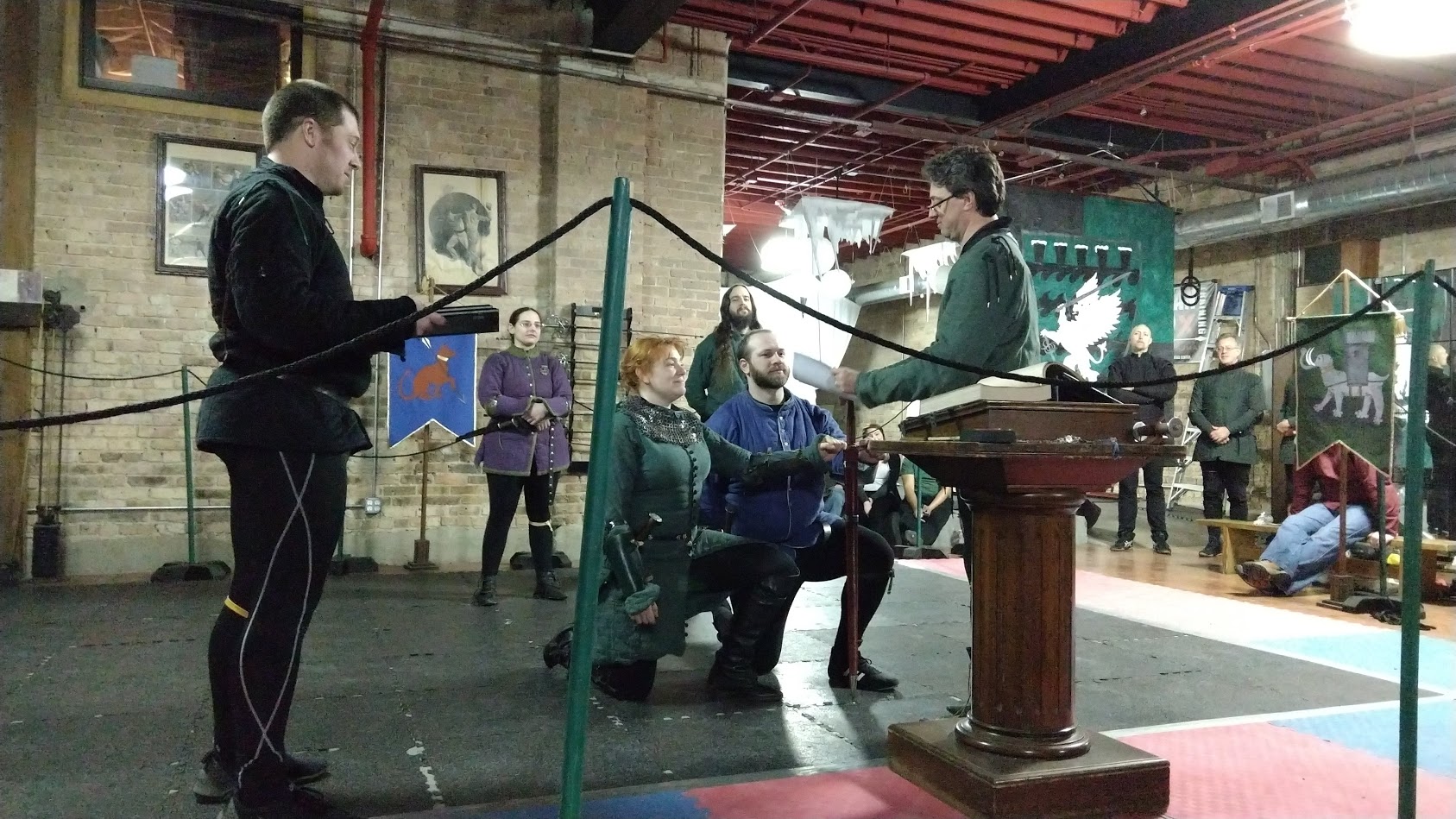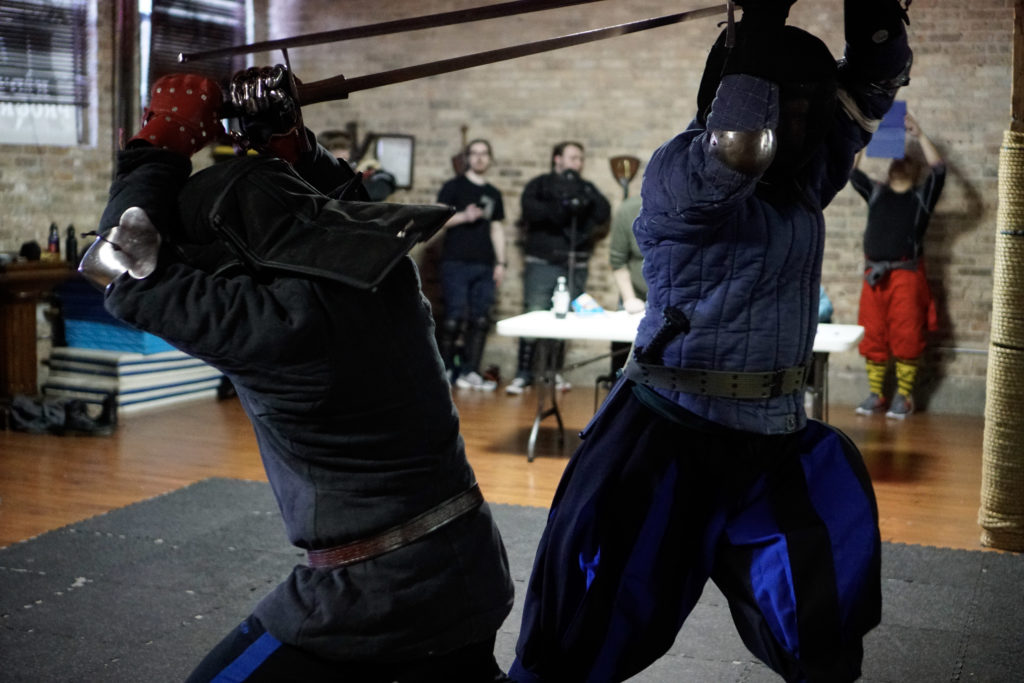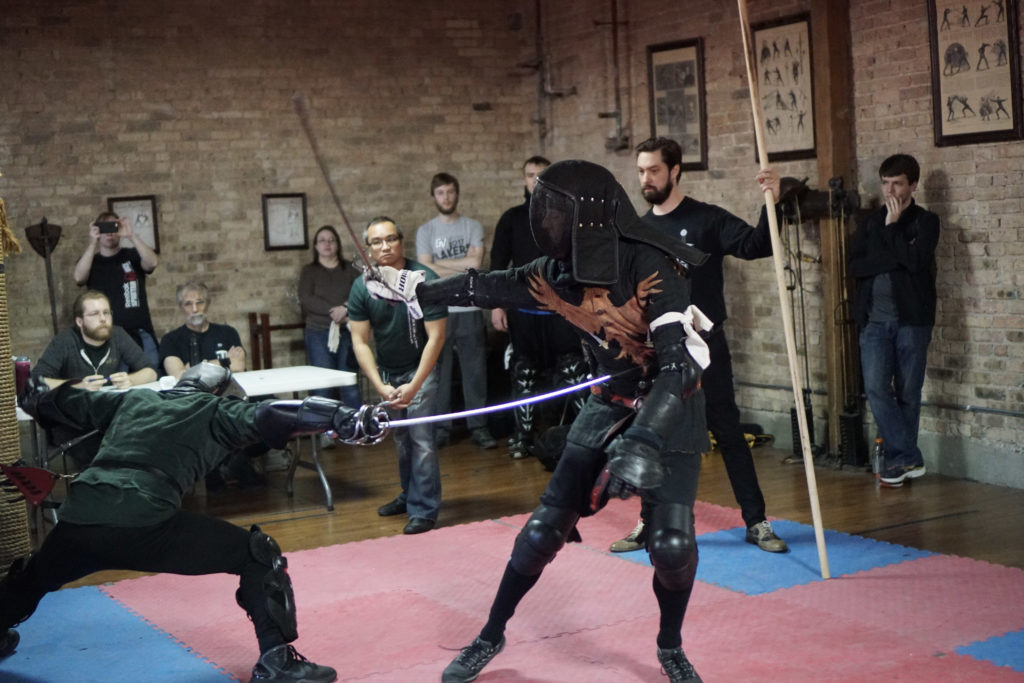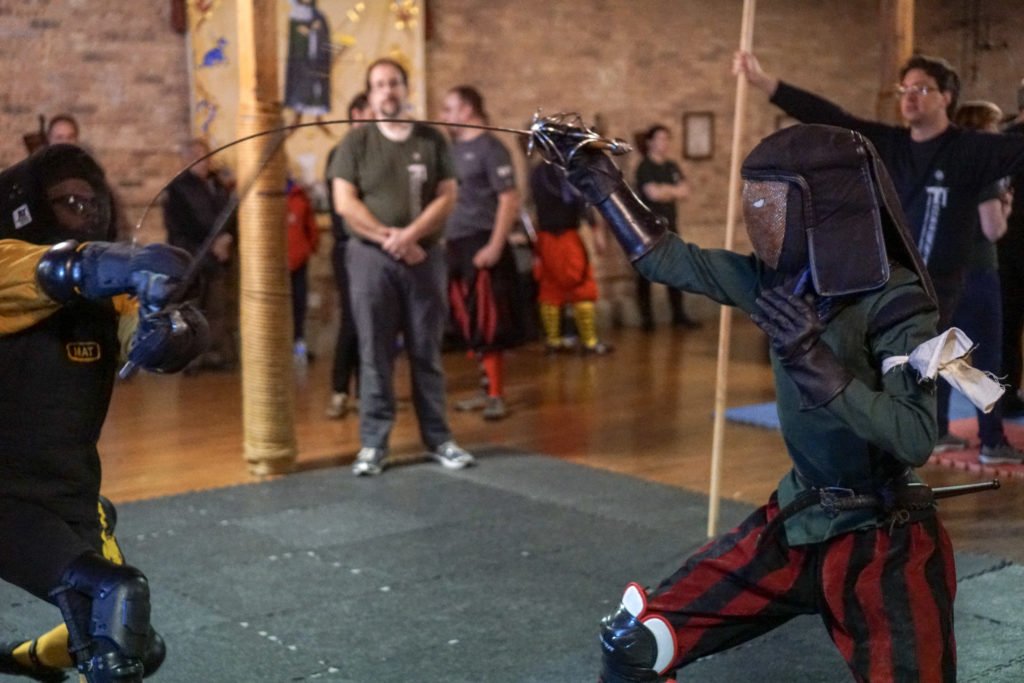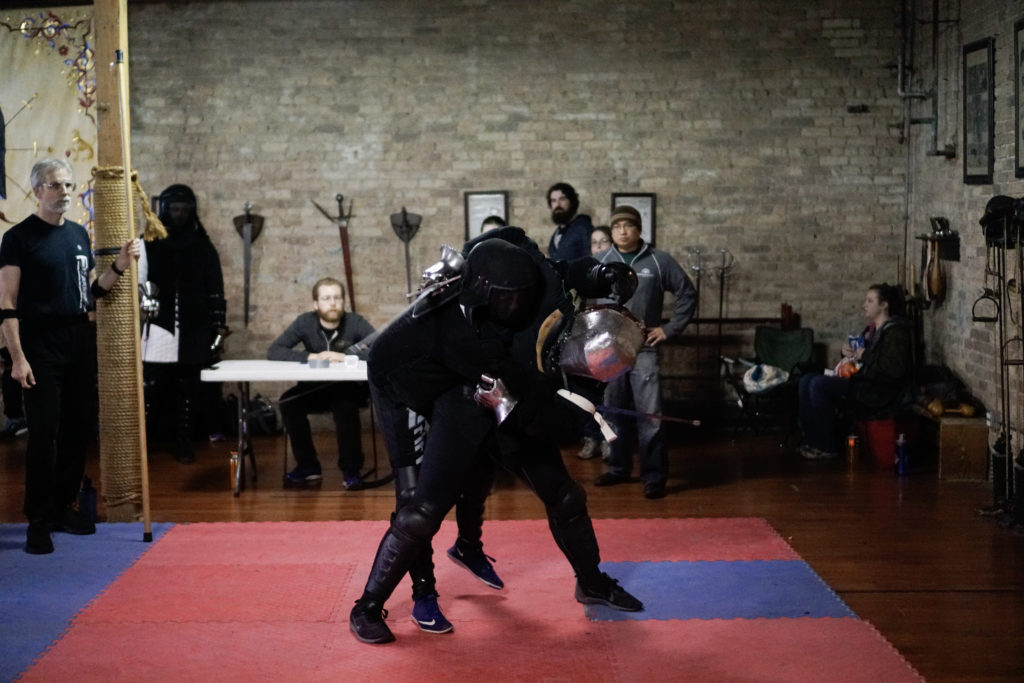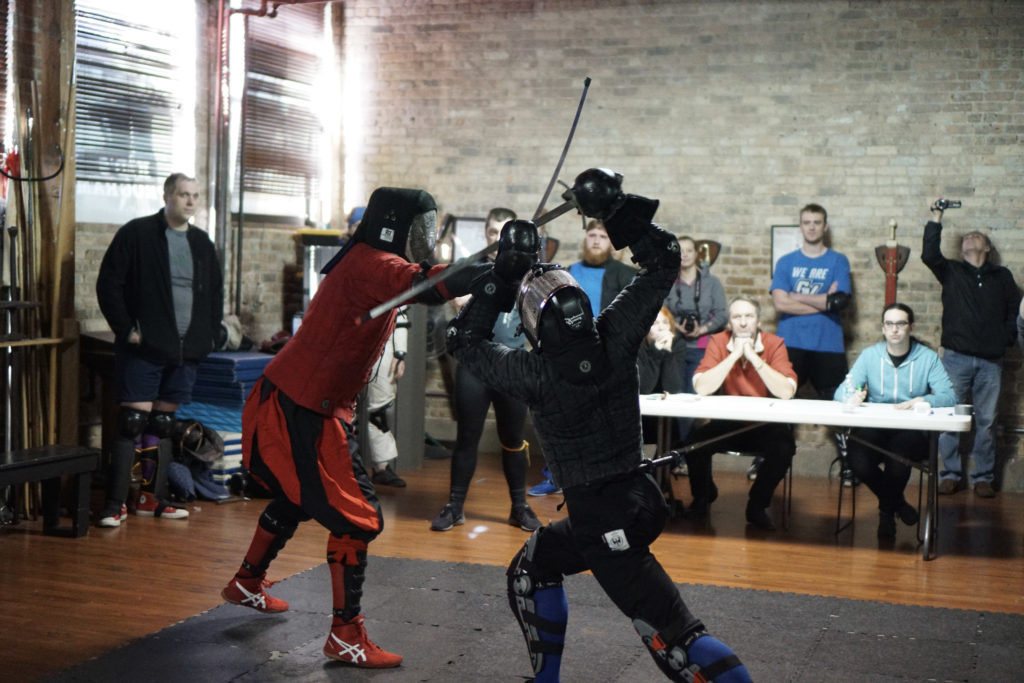It has been a strange week in HEMA-land; at least from my little corner of the world. On the one hand, it has been a great week for getting the word out into the mainstream that there is something called Historical European Martial Arts; on the other, what should have been a fascinating attempt at a deed of arms bridging practitioners of two different martial traditions turned into an unnecessarily violent attempt at a “smackdown” and much of our community has responded to this by showing a profound ignorance of what the event was about, combined with putting the blame almost squarely on the injured party; largely, I suspect, because he’s the outsider.
ANY PRESS IS GOOD PRESS, BUT GOOD PRESS IS BETTER
Folks in the HEMA-Sport world are rightly a-glow with the positive New York Times Article on the popular Longpoint event, and justly so: it was a well-done article that nicely portrayed the international efforts to create a modern combat sport focused on unarmoured longsword fencing — only in modern safety gear — deriving from late medieval German martial arts; in essence, European kendo, complete with a standardized look, rigorous and complex judging, resets after every blow (but not fought to a single blow, as a real match with sharp steel would likely transpire) and a set number of points to win the match. Indeed, much like kendo, points are even conveyed by the judges using colored flags or batons in semaphore-like actions. Unlike post-WWII kendo, but much like its predecessor, limited degrees of grappling and unarmed striking are also allowed. The article did a nice job of covering this, and showing that this is a serious attempt at creating a new sport by normal folks, not a bunch of Highlander-meets-Game of Thrones rejects. (Well, the original article did; MTV and some of the other less “newsy” outlets had to work GoT in there somehow.)
I haven’t been to Longpoint, but colleagues have, and I have had a lot of talks with Ben Michels, one of the organizers, and think that they have tried very, very hard to take their sport and keep it reasonably well-tied to the source art by creating an event where the specialists can compete in their thing (forms, cutting, sparring), just like in most martial arts tournaments, while there is also a more pentathalon approach. Basically, it combines what in Asian martial arts would be completely separate combat sports (kendo, batto, judo, etc) and goes them one better, combining them into an omnibus event that is something like an Olympic pentathlon. In a nod to the diversity of HEMA, Longpoint even featured demo bouts of areas outside tournament interest, such as armoured combat and Polish saber.
So the story is getting a lot of play which is great news and I cheerily shared it; to the perplexity of some of my more traditional-minded friends (those who know myself or the Guild will know that I’m a fan of competition but not formal combat sports, for reasons I’ve articulated elsewhere at length). It’s been a weird conversation, that can be summarized like this:
THEM: “Why would you think this is a good thing? Doesn’t the article just point to the idea that there is this modern tournament sport?”
ME: “Yes, that was definitely the point of the piece: to cover a tournament that is promoting a new sword sport.”
THEM: “But what about the more holistic look at the art? Not just besides longsword, but actually training in techniques that don’t show up in tournaments?” (By which they mean things like the German *schnitt* or *Abschneiden*, polearms, dagger combat, armoured combat — all the stuff that makes the “knightly art” a composite art.)
ME: “That wasn’t the point of the story, nor is it the point of Longpoint or the HEMA Tournament folks — it is to have a competition derived from historical material with mostly longswords and some dabbling in other swords and wrestling. The article makes that clear, and I am not sure how many times Jake, et al had to use the word “sport”, “competition” or “tournament”, or refer to “clubs” (vs. schools) or “coaches” (vs. instructors) to get that across.”
THEM: “Well, yeah, but that isn’t what we do.”
ME: “Nope”
THEM: “So what makes that good for us?”
ME: “Truth? Not much, except that people want to learn to “swordfight”; whatever that means to them. So if you see this story and type in “medieval swordfighting Chicago” you get the CSG. If you show up and find out that some of our folks go to tournaments, but we don’t all dress in black Absolute Force gear, use feders and focus on judged tournament fighting and that is a turn-off, no harm done.”
THEM: “Yeah, but….”
ME: “Look, two of my friends [Jake Norwood and Ben Michels] have worked their asses off for several years to build this thing and their community. Can’t I give them an attaboy?”
THEM: “I guess….”
And so on. Stupid, right? If this were some kendo buddies or sport fencers whose event got notice and I plugged it, no one would care. But this is “HEMA” (whatever that means to each reader) and we have to pretend that:
a) it is a singular, monolithic “thing”;
b) we are all training for or trying to do the same singular, monolithic thing,
c) if you don’t do it my way you are either a lily-livered wimp OR just a sport fencer who wouldn’t know a medieval manuscript from a piece of old toilet paper.
The truth, of course, is rather different:
a) as an activity that covers the research, reconstruction and on-going interpretation of martial arts from Europe and her colonies over a 600 year time period, even if we all had the exact same methods and goals, “HEMA” would hardly be a singular thing;
b) when you train to compete in a sport, you learn how to train to maximize your performance, which leads to some very effective competition techniques [see Axel Peterson’s victory described in the NYT video slow mo at 3:19] that simply do not show up in historical sources, or are even directly advised against, but make perfectly good sense in a bout where as soon as the hit is made a judge throws a flag and the fight either halts (no need to worry if your fight killed him), or an “after blow” scores and potentially negates the low hit. Thus it is no surprise that this same strategy is common in modern kendo and has a specific name: nuki do, often done dropping to one knee.
c) the truth is that some folks both compete and study the holistic art, but we all have to choose where our focus is. If it is competition, then you are going to need to pare down what you do to the weapons and rules that will work best in that environment — you *must* if you wish to be competitive — and if it is the latter, you train broadly and try to adapt what you know to the given ruleset and equipment you are presented with. The problem only comes when you start believing that a tournament is a measure of real combat effectiveness anymore than is doing partnered drills or politely fencing with your mates in the salle. This is as true of is HEMA as it is to mistake boxing or MMA for Combatives and urban defense.
So congrats to Jake, Ben and all of the other xKDF folks for landing their 15 min of fame: while we have different focus and interests in the larger HEMA-umbrella, you worked hard, it’s paying off and more people know that there even were historical arts to learn in the first place. Good on you!
MISSING THE POINT
Sadly, what one hand giveth, the other taketh away. Remember that last point of mistaking what you do for being “real” or indicative of “the way?” Because combat sports are by nature meant to be large, unifying endeavors, they are particularly bad at this, and many practitioners, immersed in their sport’s culture, quickly forget that not all similar activities are meant to be a new take on their sport, and are not done for “competitive” reasons.
This takes us to the second part of this weird week, which was the video, reports and discussions on my friend Dr. Manoucher Khorasani’s 100 Man Fight in Prague this past weekend. Firstly, Manoucher is not a HEMA person at all, but rather has taken a parallel path in reviving Persian martial arts, which he has written upon extensively and maintains a large Youtube library of videos of his work. What’s this have to do with modern HEMA? Read on…
As Dr. Khorasani writes:
Persian sources talk about the legendary hero of one thousand man “Hezarmard” a hero who survived one thousand fights. In the same spirit japanese kendo has tachikiri/tachigiri no seigan as a test of courage, endurance and stamina. As a former Kyokushinkai and an admirer of Soke Mas Oyama I have been admiring the one-hundred man fight kyokushin test. Only few blackbelts worldwide have passed the test. Many tried but failed. Everyone who knows fullcontact knows how hard the Kyokushin as a bare knuckle fight is. Although one hundred man fight is very hard and fullcontact its goal is not to destroy the candidate and to knock him out as it is done in the Kyokushinkai world championships or selection tournaments. Moreover one wants to test the courage, stamina, determination and willingness of the candidate.
As a researcher I wanted to see how a person can handle that type of fighting with unsharpened training swords and weapons. My team and I trusted Mr. Herbert Heissler, the head of the Czech Stuntsfighter association with choosing the opponents and weapons.
It Probably Seemed Like a Good Idea at the Time
This should also hardly be a new concept to people who have been in the martial arts world for any appreciable time. As Dr. Khorasani mentions, this contest exists in the Kyokushinkai and is quite famous. It also exists in kendo, in the form of tachigiri and in more contemporary martial arts in the “Beastings” of the famous Dog Brothers. This latter is described as:
The “Beasting” is an initiation tradition taken from the UK Training Groups. If a Dog Brother Tribe member wishes to become a DBMA Group Leader he/she has the choice to undertake a “Beasting”. The initiate has to fight continuously for 8-12 mins, every minute facing a different (and fresh) Dog Brother (aka ‘a Beast’). The Beasting is totally voluntary, and is not required to become a GL, but is done by those who want the Kudos…
You don’t go into a Beasting to win, but to survive. The ‘Beast line’ should be composed of fighter who are your peers or better. Any one of them has the capacity to end your day. The purpose is to push rather than break, after 3 or 4 minutes the initiate is usually exhausted and battered. At this point it’s all about balls and determination.
So far so good, and really this should not be considered “weird” to a HEMA person: after all, Playing the Prize; which was how the historical guilds in many countries bestowed rank, and has been used by many modern HEMA schools was just such an event. Although 100 men exceeds the numbers recorded by 16th century Guilds such as the London Masters of Defence, those prizes were also played without any real safety gear besides blunted weapons, and some basic safety rules: no pommel strikes or grapples, no hits below the belt, no thrusts to the face (sometimes no thrusts, period). Likewise, staking out a location for a set time to fight all comers did not originate with the Guilds — it was an aping of a tradition already established by knightly combatants in the 14th century — nor did it end with them; such activities continued with English “stage gladiators” until well into the 18th century was the origin of modern prize fighting.
Unfortunately, things didn’t go very well. As Dr. Khorasani reports, from the moment he arrived the rules changed, making him underequipped and his opponents with a very vague notion of what “full contact” meant:
He assured us that all weapons were aluminum besides Fechtfeders which were made of steel. We were assured that they were light Feders as used in longsword championships. My main instructor Mr. Heiko Grosse pointed out to me that I should make sure that they should be flexible enough as our armor was light for steel weapons. I have always admired longsword fighters as they are very technical. We figured my light armor which was meant to absorb the shock of fullcontact aluminium sparring weapons could also do the same with very flexible steel feders. We agreed that the fights would be fullcontact and contnuous. In spite of the fullcontact nature of the bouts, the event was to test my stamina and willingness to fight. We asked couple of times to change the date from Thursday September 11 to a weekend so that both my staff members could accompany me at least and even some other team members from Razmafzar. However we were reassured by Mr. Heissler couple of times that was the only day where all participants including fighters, doctors and organizers could come…. I was relaxed and not nervous but to my surprise I realized that some of the participants were nervous and were speaking loudly to Herbert in Czech. I did not understand anything but I figured they were discussing the rules. I did not care about the rules as my intention was not to score neither count points. My biggest challenge and enemy there were not my opponents as I looked at them as my helpers. My biggest challenge and enemy were my stamina and dehydration.
He was clearly wrong about that, since:
There were a professional surgeon and a medic there who advised that after ten rounds the fights should be stopped as they had to check me and my possible injuries and I had to drink due to the danger of dehydration in armor. That meant stoppage after twenty minutes of continuous fighting. I agreed with them. At this stage I would like to thank both gentlemen for their professionalism and their help during the entire event.
Although Dr. Khorasani was polite in his analysis of the fight, he makes it clear that the feders were not the lighter flexible feders he was familiar with, nor where his opponents really trying to “press him”, they were trying to break him. Which they did, with four broken ribs, two cracked ones and several broken fingers, one requiring surgery.
Now, as you can see in the report of the event from one group of challengers, they feel they did nothing wrong and “were fighting as they always do”. Indeed, they state expressly:
Members of Digladior did not fight brutally. Conversely they tried not to attack stronger than was necessary in acute situation. The aim was not to knockout dr. Khorasani but to fight him for 3 hours and 20 minutes. (Most illustrative is video of the 8th fight – dr. Khorasani and Vladimír Nerandži? of Digladior. Dr. Khorasani has already no energy to defend himself and V. N. is attacking and hitting him but without speed and power.)
Maybe so, and from the video, I would agree about the 8th fight. But it didn’t start that way. I don’t know a single member of Digladior, but I can at least compare the video of the challenge fight with the videos they post of them fighting amongst themselves. As a good example, look at the end of the second fight and the transition into the third. I understand that the rules were “full contact”, by which I would assume that it was meant with sufficient force to deal with an unarmoured foe with sharp blades — no playing tag. Those hits, while fairly typical of many tournament hits for sure, were far harder than necessary to the task. More so, the mad rush to attack Dr. Khorasani by the sword and dagger man, without so much as a salute or even a pause for him to catch his breath, was just coarse and set the tone for the entire fight which was wild and brutal. To be blunt, those weren’t sword cuts, they were stick fighting strikes with a blunt, steel stick. The sixth and seventh fights weren’t much prettier than the third, but at least most opponents offered a salute and moment to catch your breath.
I can’t comment on the idea of letting a guy with an axe and shield fight, and I won’t dignify a number of the non-Digladior fights with the term “HEMA”, other than the gentleman with the dussack and buckler, who seemed to the only guy actually trying to use technique and fence, rather than “beat down the foreigner”. Since it happened in Europe, and it was martial (that is what you call it when someone is trying to beat your head in), so maybe we can just call it EM.
HEMA-tic Naval-Gazing (Or, Not All Feats of Arms are Sporting Events)
Of course, folks on the Internet will never miss a chance to pass judgment, even when they continue to miss the point. So, we have a group of HEMA folks, mostly European, who are quite content to lambast Dr. Khorasani. Here are a few:
1) This is what happens when a Battle of the Nations guy decides he is going to play in light gear with HEMA people.
2) This is such an embarrassment for our sport, and misses the entire point of why we do this.
3) This is why you have referees calling hits!
4) The event itself was a chest thumping exercise coupled to an ego trip the result of which is something akin to a pissing contest. I have little or no respect for that kind of event or the self serving nature that really underpins it … it reflects poorly on the wider community and is nothing I would ever want any part of. My two sous …
Unfortunately, these comments are myopic. Perhaps, just perhaps, this entire martial challenge had nothing to do with a) HEMA or b) a sporting event? Just taking these four comments, look at the logical rebuttals:
1) Dr. Khorasani recently taught some Persian wrestling to a BotN team; he is not a Battle of the Nations fighter. (For those not in the know, Battle of the Nations is another type of “medieval combat sport” — essentially submission fighting with steel weapons in full armour. It is very rough fighting, although as the rules expressly ban thrusting, it negates the principle historical method of combating armour, and consequently most BotN fighters have little interest in the historical arts themselves.) He *does* own a full suit of Persian armour, just as I own two suits of European harness. However, most HEMA folks — especially those focused on tournaments — have no interest in armour or armoured combat and consider it “dress up” or “reenactment”. An odd position for folks studying ‘the knightly art’ perhaps, and not true — there was even an armoured demo at Longpoint — but the larger point here is that the poster clearly didn’t read either the challengers or challenged description of what the event was, and just assumed that Dr. Khorasani must be engaged in “that other sport”, one that has no love lost with the HEMA tournament scene.
2) It can’t be good or bad for “our sport” because a) “HEMA” does not unilaterally equal “tournament fighting”, b) Dr. Khorasani does not study HEMA, and not all of the participants were “HEMA” people, c) wait for it….this was not a sporting event, but a martial arts test, as was made clear from the get-go. Why a man studying Persian martial arts is now responsible for the reputation of HEMA tournament combat is beyond me.
3) Referees defeat the entire purpose of a test of character and endurance. Indeed, part of the reason for referees in competition is an inherent suspicion that the fighters will not be honest in calling blows. Further, many forms of HEMA competition today do indeed have people call their own hits, or at least refuse points for blows they think they improperly landed. This is simply purged from the competitive tournament circuit because it “puts too much pressure on the combatants”. That right there is the difference between a martial art as a test of character and a combat sport as a way to win some sort of trophy. Both are correct in their own place and time, but the post shows a complete ignorance as what this event was.
4) If any chance to hold the field is just arrogant chest-beating, I would presume that this poster would frown on things like this:
Willyam Pascall shalle stand againste all Maisters with the following weapons, vis Axe, Pyke, Long Sword, Backesworde, Two Hande sworde and Rapyr & Dagger
or this:
Robert Grene and William Browne shall play against all alyens and strangers beinge borne Without the king’s Dominions in Axe, Pike, Rapyr, Dagger and Rapier and Targait.
Which are only two of the many challenge matches fought by members of the London Masters purely as a public test of arms, and have clear analogs throughout the 14th and 16th centuries, throughout Europe. Likewise, I am sure that modern challenges such as Guy Windsor’s two-hour holding of the field at WMAW 2009, or Bob Charrette’s celebration of his 60th birthday by fighting 60 minutes in full harness at WMAW 2013 are just marks of hubris, rather than a personal test?
I don’t know that last poster even by name, so I confess that it is a bit unfair to make him a strawman in an argument, but it speaks to what discussion on social medial regarding the 100 Man Fight has really left me feeling appalled by: the length to which the self-referential nature of HEMA Sport fighting has made it impossible for so many students of western sword arts to even “get it” when confronted by something that doesn’t involve referees, flags and points — items that our ancestors would themselves have been largely bewildered by.
Take this comment, by one of my colleagues and a respected, “up and coming” teacher of European swordsmanship, who has a very detailed and active blog:
There is very little in this event for the HEMA tournament organizers to learn from in my opinion, but it does enforce what is already common knowledge. As a singular event there may be something to learn from this — mostly what not to do — and the main point I wish to emphasize is that for a swordsman, or a fencer, it is a requirement to be brave and tough, but doing something like this is not necessary nor is it beneficial for anyone. This should be true to those who were part of it too, as it seems that no one had intended for the event to finish this way.
That would be reasonable if only a) this sort of thing had *anything to do with tournament fighting in the first place* — as Dr. Khorasani had stated repeatedly, and as the Digladior report makes clear they also understood, at least in theory, b) what the test was meant to be and what happened are not the same thing — again as made clear, c) these sorts of tests of character already occur in many martial arts, and indeed in HEMA groups — almost any that use Prize Playing.
Again, from the same poster:
there is no glory in getting bruised by a sword. There is some, but very little being tough. Each one of those bruises probably stands for a lost limb and a fatal injury. Also there already exists decades of testing of protective equipment, and riot vests and hockey gloves have been seen as inadequate years ago. It saddens me too someone walk the path of broken fingers just because of ignorance.
While I agree with the statement in general, I would point out this is comment is somewhat disingenuous as the specialty HEMA gloves worn by tournament fighters did not stop not one, not two, not three, but four broken fingers at WMAW, one of our own members from getting a broken hand in the tournament at CombatCon, and on-going complaints after every tournament about broken fingers or hands. Further, as Dr. Khorasani states, he went there expecting to use aluminum swords and light feders, and that is not what he was greeted with. Events like the Dog Brother Beastings demonstrate quite clearly that one can fight in very, very little gear very hard and not get overly injured if everyone understands what they are trying to do.
I would really like to write the challengers a pass and say that they didn’t understand, their own words state that they knew why they were there.
This same poster goes on to post:
These things have been discussed before, but the notion of full-contact swordfighting is strange. Due to the paradoxically impotent but dangerous nature of the blunt weapons leads to an emphasis in effectiveness of unarmed close quarters techniques and at times overly hard hits with the weapon. The latter is due to the need to get physical effect on the opponent with the weapon that is essentially deprived of its capability of causing this effect: the sharp bits. In the video the fights were not stopped on hits, which is exactly the things that leads to escalation unless the fighters have a proper mutual understanding and good communication during the fight. Again something that has been established during the years in various tournaments, hence leading to rules where maximally one “after-blow” or follow-up strike after initial hit is allowed.
Again, what seems reasonable at first, makes sweeping assumptions about how fencing occurs throughout the HEMA-verse and assumes that tournaments have been designed to address this “problem”. They have not. Not least of which being the one-hit and stop, reset, nature of HEMA tournaments is highly artificial. As a great deal of forensics data, not to mention historical accounts of swordfights and the advice of the masters themselves, unless the head or hands come off, very little in a swordfight is guaranteed to be an instant fight-ender. Having a judge call HALT does not simulate this in any way — nor was it thought to do so historically; the “afterblow” as used in modern tournaments is entirely anachronistic from its use in the 16th century fencing Guilds and is at best based on a very liberal read of a very short passage on fencing competitions by the Bolognese swordsman Antonio Manciolino. Indeed, German Fechtshule seemed to have been much more like knightly deeds, consisting of counted blows, where the fight just continued until the set number of blows had been thrown.
While some folks complained that there was “too much grappling” (again, assuming that any one hit is guaranteed instant incapacitation) on Khorasani’s part, they ignore that the hard blows were being delivered by the guys in the HEMA gear. Which, of course, is another myth: that HEMA tournament fighting is “unarmoured combat”. Sure, the same way kendo is — fought in modern armour. When the tournament circuit was first beginning, mostly with nylon swords, many of us were criticized for being overly armoured by wearing helmets, gambesons, gauntlets and forearm guards. But now that steel is in play, the average tournament fighter now wears a functionally heavier set of equipment:
- A heavily padded jacket, a gambeson by another name, which is designed to incorporate plastic armour plates on the inside should the wearer choose;
- Heavy plastic/foam gauntlets or lacrosse gloves of varying design;
- Hard joint protection for the elbows
- Forearm guards
- hard knee and shin guards
- throat protection
- And a number of them wear additional protection under their jacket or trouser.
The end result of heavy kit is that people aren’t terribly afraid of getting hit and throw themselves into fights. Anyone who wants to say that HEMA tournaments avoid “full contact hitting” because it really isn’t necessary to hit that hard with a sharp weapon (a point on which I agree), or that allowing takedowns on a hard surface is unusual just need watch the messer finals from Longpoint to see that clubbing-masquerading-as-swordsmanship is hardly something that was invented for the 100 Man Fight.
The idea of calling a halt at each hit ignores that continuous, flowing fights is common in many schools, particularly during Prize Playing, and yet injuries, escalation and other problems are rare. Why? Because the challengers aren’t there to win, only to give a good, clean fight. But as this sort of engagement is not a part of his own sparring culture, nor does he have any background in martial arts that have these sorts of initiatic challenges, he assumes it cannot be done and that a style of combat sport that has been invented over the last decade must provide the one, true, working model for testing oneself with swords.
This post ends with the sage advice that seems to run through many of the discussions on social media:
Likewise, if a full contact armored fighter wants to study – or compete in – a historical sword art simulating unarmored duel with sharp swords, he has to somewhat adjust his mentality and equipment.
And it should not require anyone getting beaten half-dead to realize the above.
Again, the only terms I can use are myopic, because the assumptions on this post, and others, is that they are in a position to sit in judgment on the “outsider” who was messing with their sport, and thus any problems must have been almost entirely Dr. Khorasani’s. Over and over the discussion since last week has circled around the following:
- There is an assumption that Dr. Khorasani was a BotN fighter, when a simple read of his webpage and watching his videos (also at least one of the posters was just at a seminar with the man), would make it clear that what he meant by full-contact, and that the gear he stated he would fight with is what he does most of his bouting in. You don’t have to know the man at all, you just need to go to Youtube. Persian Martial Arts are just like their European counterparts of the period — meant to be used in and out of armour, and originally developed for warfare. The fact that so many modern HEMA people want to study a 15th c art while ignoring a major part of the context, does not mean those who do differently are engaged in “crash and bash” fighting.
- There is a hypocritical contradiction here, where Dr. Khorasani must be a BotN guy looking to duke it out in heavy gear, but then he is held to task for being the guy too lightly armed and armoured. Now, whether or not he should have trusted the organizer to communicate this is another matter, but then again so is the question of why his opponents felt a need to come after him with kicks thrown while wearing plate armour, an axe or throwing blows that frankly were way harder than necessary for a friendly challenge, particularly one where there was nothing to win.
- No one was “beaten half-dead” — although the injuries are far more than they should have been, broken fingers and hands are quite common in HEMA circles, and broken ribs, etc not terribly uncommon in many other martial arts. The fact that one poster feels “the reason we fight with swords is because we don’t particularly like black eyes” may be true for him, but has little to do with martial arts in general.
- Nor was the intention to try and prevent being “beaten half dead”. As stated clearly: In the same spirit japanese kendo has tachikiri/tachigiri no seigan as a test of courage, endurance and stamina. What he got was a group of more heavily geared guys who, whatever their claims, were quite clearly batting for the fences.
- This was not a tournament, it was not meant to inspire tournaments. Dr. Khorasani wished to test himself in a type of deed of arms that is part and parcel of both our historical, European tradition, and his Persian one, and which has been part and parcel of a number of armed and unarmed combat arts, as already stated. This was a personal test, and the challengers are meant to push and test, not try to crush — which is far too easy to do as they are fresh and the challenged grows progressively wearier.
- Nor was it a HEMA event. If one of us wished to do this — as has been done in a variety of ways — it would be quite simple; there are now HEMA events all over the world. Dr. Khorasani and his small team represent the sum total of Persian swordplay researchers. So, rightly or wrongly, he trusted someone he knew to help him arrange such a test vis a vis the help of swordsmen he felt shared a similar interest in reconstructing their traditional martial arts. I would assume he came that conclusion based on the HEMA events in Italy, Malta and Germany he had participated in. He was clearly wrong.
I want to be very clear. I think Dr. Khorasani was ill-advised to do this. The reason is that all of these other challenges, from Guild Prize Playings to Dog Brother beat-downs, occur “in house” — within one’s tradition, with fellows on the same path. Because he does not have other folks in his tradition to do this, he of necessity had to go outside his tradition. But in that case, he would have been better-served working more closely with a group of HEMA folks he knew well, perhaps at one of their events, where he could have had more control over the events. When the organizer would not move the date, and it was clear that the standards of weapons and gear were wildly different, it was late in the game to back out.
I also look at the recommendations made by both Khorasani and Digladior for moving forward and agree that the matches should have been shorter (a set number of blows, IMO), the exact specific gear noted and required and mass weapons banned on less the fighting was to be done in armour. Those things were poor choices on everyone’s part.
But having said that, as HEMA person, what I find depressing is not the “effect on HEMA” of this event, but the sure inability of people to understand that fights like this can and should be conducted in a tough, but friendly manner, and that while a safety marshal is necessary, fighting shouldn’t need a referee to constantly call hits: the ability to fight with control and to acknowledge hits ought to be well-within the means of anyone who calls himself a “martial artist”. The constant discussion about sports conventions, refereeing, a need to stop after every hit and so forth points to the largest problem when combat sports and martial arts collide: one finds worth in collecting points, trophies and medals, one through challenging oneself. One relies on external factors and people for control, one is about controlling oneself. One is concerned with knowing the rules and playing to those rules; one is concerned with understanding the spirit of the rules and what they are meant to challenge. Neither is “right”; they exist in a context, and both differ dramatically from combat, which is about, as Fiore dei Liberi said, “fighting without rules to the bitter end.”
I fully expect and accept that as HEMA has grown, specialization has occurred, not just by art, by what aspects of that art to practice and in what environment. We can agree or disagree on various points as to the virtues and flaws of our particular approaches, we can even agree to disagree. What we cannot do as serious researchers, teachers and students of HISTORICAL EUROPEAN MARTIAL ARTS is to ignore these differences, or insist that it is impossible or undesirable to move from one modality to another. Doing so already destroyed the diversity of fencing, and exterminated the first HEMA Renaissance in the early 20th century, in the push for standardized rules and focusing on referred competition as the “measure of the man” comes the real problem of dismissing any who are interested in something different as aberrant; it also rapidly removes us from the martial ethos of our ancestors, and makes this the pursuit of creating just another contact sport like rugby or football.
I wish Dr. Khorasani the very best in his recovery and hope the 100 Man quest will someday see light again, just more carefully planned, with folks who get its purpose and in an environment that will be respective of what all deeds of arms in chivalric cultures were meant to do — to assert one’s willingness to put themselves out on the line and test themselves in public to their utmost.
